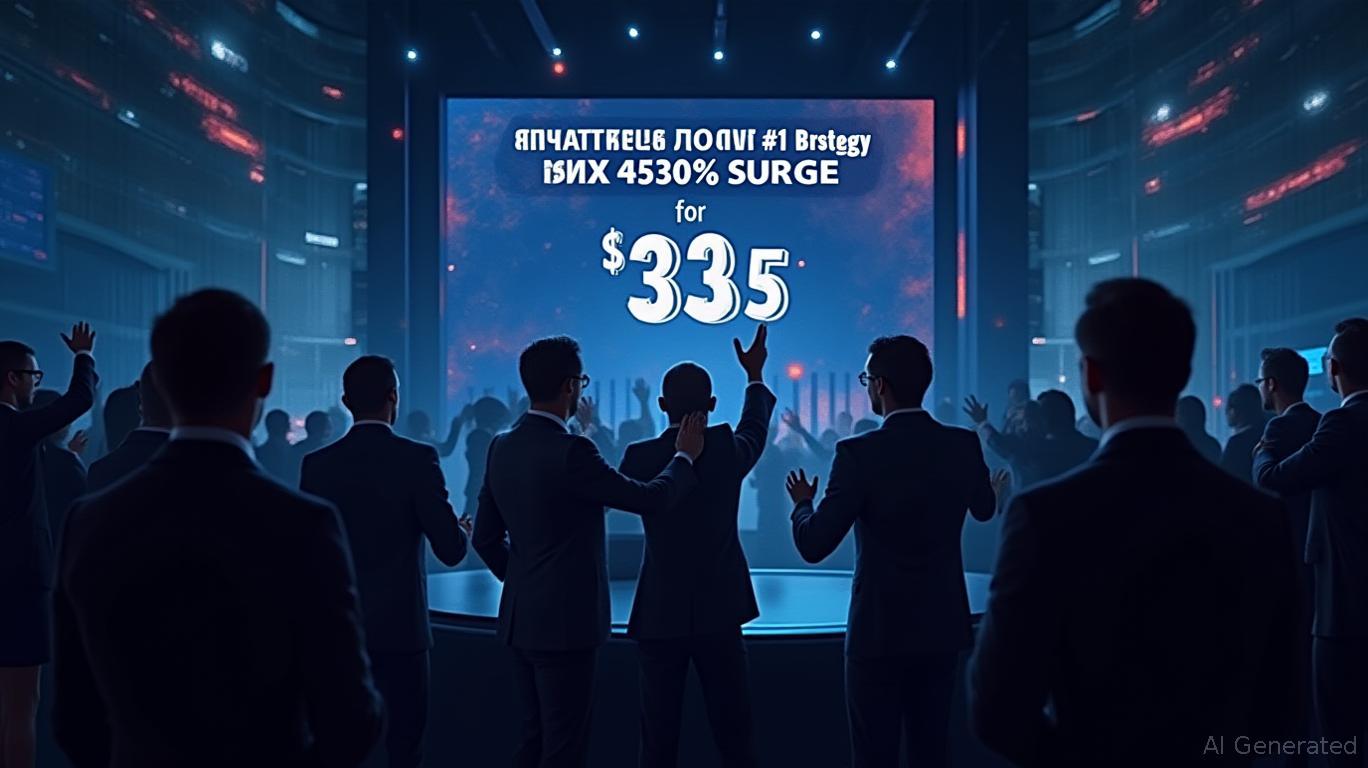Ethereum's Institutional Onslaught: Riding the Treasury Wave While Navigating Risks
The Ethereum ecosystem is undergoing a transformative shift as corporations increasingly adopt its native token, ETH, as a strategic reserve asset. Driven by yield opportunities, regulatory clarity, and the maturation of decentralized finance (DeFi), companies like
are pioneering a new era of blockchain treasury management. However, this trend is not without risks—from volatile markets to operational security threats—that demand careful analysis.Opportunities: The Ethereum Treasury Experiment
At the heart of this movement is SharpLink Gaming's $425 million Ethereum treasury initiative, announced in May 2025. Backed by Ethereum co-founder Joe Lubin, the move caused its stock to surge over 450% in a single day, reflecting investor enthusiasm for leveraging ETH's utility. The strategy hinges on staking ETH, which generates a minimum annual yield of 2% while bolstering Ethereum's security. Unlike Bitcoin's passive holding model, this active approach creates a "flywheel effect": rising ETH prices enable further capital raises, amplifying exposure to the digital economy.

The broader institutional landscape is equally compelling:
- ETH ETF Inflows: Ethereum ETFs recorded $285 million in inflows over two weeks in June 2024, the highest in four months. BlackRock's ETHA ETF grew to nearly $4 billion in assets under management.
- Regulatory Tailwinds: Advances in stablecoin legislation and the SEC's hands-off stance on protocol staking (May 2025) have reduced regulatory uncertainty. Circle's successful IPO—up 160% post-listing—signals Wall Street's confidence in crypto infrastructure.
- The "Digital Oil" Thesis: Ethereum's role as the backbone of decentralized applications (dApps), NFTs, and DeFi protocols positions it as the "fuel" for the digital economy. With a capped issuance rate (1.51% if fully staked), ETH combines scarcity with utility, akin to oil in the industrial revolution.
Risks: The Dark Side of Leverage and Volatility
While the opportunities are vast, the path forward is fraught with challenges:
Leverage-Driven Vulnerabilities:
Companies like SharpLink have raised funds via convertible debt, creating a ticking clock. If ETH prices fall or debt matures (most by 2027–2028), firms face tough choices: sell assets at a loss, refinance, or default. A Market-to-Crypto-Asset Ratio (mNAV) below 1—as seen in some Bitcoin treasury firms—could trigger forced sales, amplifying price volatility.Operational Security Threats:
High-profile incidents, such as the kidnapping attempt of a Ledger co-founder's family member, underscore risks tied to holding large crypto reserves. Companies must adopt multi-signature wallets, MPC protocols, and insurance (0.55%–4% of assets) to mitigate physical coercion ("wrench attacks").Competitive Pressures:
Ethereum's dominance is under threat. Chains like Solana attracted the most new developers in 2024, while Bitcoin retains primacy in ETFs. Ethereum's Pectra upgrade (May 2025) improved scalability but has yet to recapture its 2021 all-time high ($4,878 vs. ~$2,800 in June 2025).Regulatory Uncertainty:
While progress has been made, pending legislation (e.g., the Genius Act) and SEC scrutiny of leveraged strategies could introduce headwinds.
Investment Strategy: Navigating the Ethereum Treasury Wave
For investors, the Ethereum treasury trend presents both opportunity and caution:
- Optimism for ETH as Infrastructure: Institutions are flocking to Ethereum's DeFi ecosystem and staking yields. ETH's role as "digital oil" justifies long-term holdings, particularly via ETFs (e.g., ETHA) that mitigate custody risks.
- Selective Exposure to Treasury Firms:
- Favor companies with low leverage: Focus on firms like SharpLink that have diversified revenue streams beyond crypto. Avoid those relying heavily on debt.
- Monitor mNAV ratios: Track whether a company's market cap remains comfortably above its crypto holdings.
- Hedge Against Volatility: Pair ETH exposure with stablecoins or traditional safe havens (e.g., gold) to balance risk.
Conclusion
Ethereum's institutional adoption through corporate treasuries marks a pivotal shift—from speculative asset to foundational infrastructure. While risks like leverage and security threats loom, the "digital oil" narrative, yield opportunities, and regulatory progress suggest Ethereum is here to stay. Investors should embrace this trend strategically, prioritizing firms with disciplined capital structures and keeping a watchful eye on systemic risks.
In the race to dominate the digital economy, Ethereum's blend of utility, yield, and ecosystem depth positions it as a cornerstone—but success hinges on navigating the stormy seas of adoption and regulation.
Risk Disclosure: Cryptocurrency investments carry high volatility and operational risks. Always conduct thorough research or consult a financial advisor before making investment decisions.

Comments
No comments yet